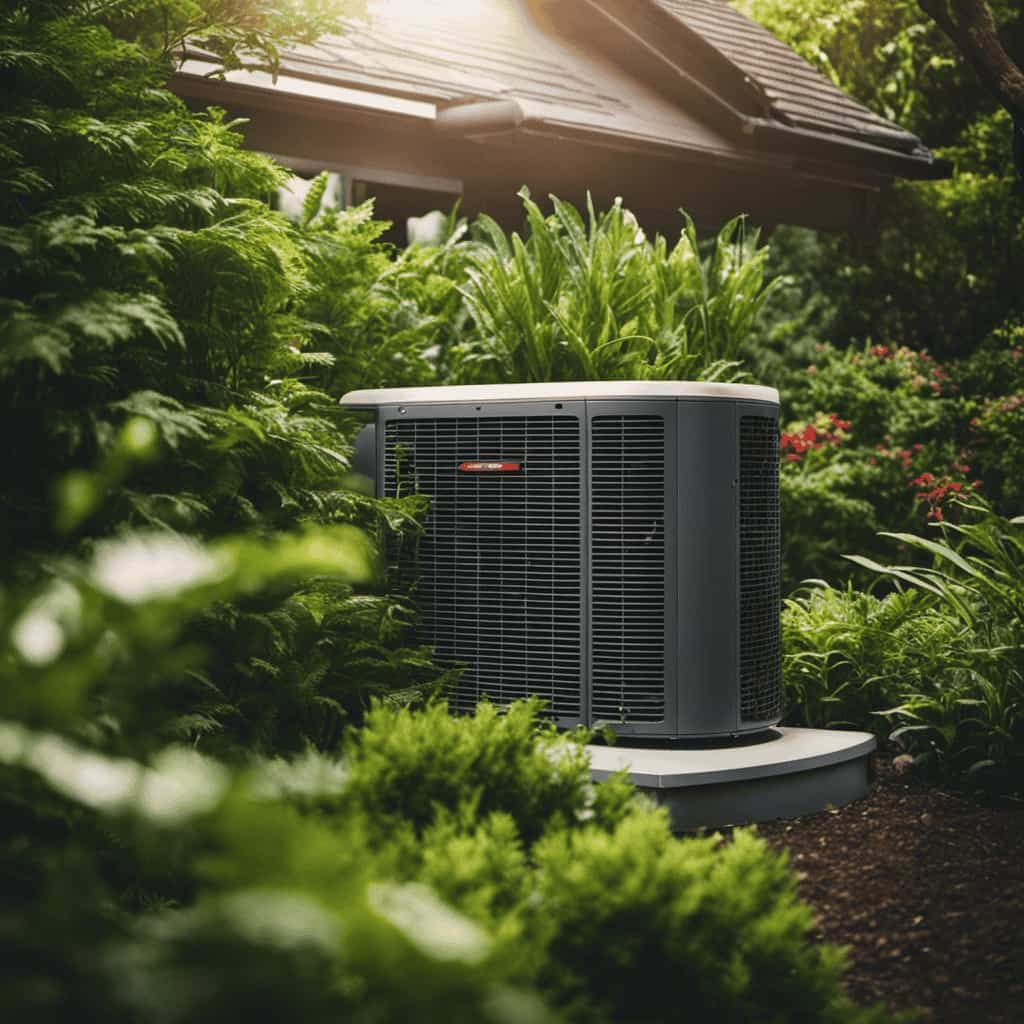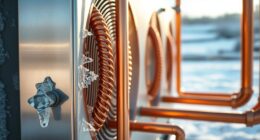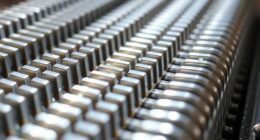In our quest to excel at transferring thermal energy, we explore the complex realm of heat pumps that use refrigerants.
By understanding the complexities of heat transfer mechanisms and the vital role of refrigerants, we unlock the potential for optimal performance and efficiency.
Join us as we explore advanced techniques and strategies for controlling heat transfer in these systems, ultimately aiming to serve you better by maximizing heat exchange efficiency and overcoming challenges in the realm of thermal energy transfer.
Key Takeaways
- Heat pumps extract heat from a low-temperature source and transfer it to a higher-temperature sink.
- Refrigerants act as working fluids in heat pumps, absorbing and releasing heat during the refrigeration cycle.
- Efficient heat transfer is crucial for optimal energy transfer and improved overall system performance.
- High-efficiency heat exchangers play a crucial role in maximizing heat exchange efficiency.
The Basics of Thermal Energy Transfer in Heat Pumps
Understanding heat pump operation is crucial in comprehending how thermal energy is transferred in these systems. Heat pumps work by extracting heat from a low-temperature source and transferring it to a higher-temperature sink. This process is facilitated by a refrigerant, which undergoes a cycle of evaporation and condensation. The refrigerant absorbs heat from the source when it evaporates, and releases heat when it condenses.

Insulation plays a vital role in thermal energy transfer, as it reduces heat loss or gain during the process. By minimizing heat transfer to the surroundings, insulation improves the efficiency of heat pumps. It’s essential to choose insulation materials carefully, ensuring they’ve low thermal conductivity to maximize energy savings and maintain optimal temperature control.
Understanding the Role of Refrigerants in Heat Pump Systems
We can gain a better understanding of the role of refrigerants in heat pump systems by examining their chemical properties and heat transfer characteristics. Refrigerants play a crucial role in the operation and efficiency of heat pumps. The selection of the right refrigerant is essential for maximizing heat pump performance and improving overall energy efficiency.
Refrigerants act as the working fluid in heat pumps, absorbing and releasing heat during the refrigeration cycle. They undergo phase changes from a low-pressure vapor to a high-pressure liquid, allowing for efficient heat transfer. The chemical properties of refrigerants, such as their boiling point and specific heat capacity, determine their ability to absorb and release heat.
Choosing the appropriate refrigerant involves considering factors such as environmental impact, safety, and thermodynamic properties. The goal is to find a refrigerant that has a low global warming potential (GWP) and ozone depletion potential (ODP), while also providing high energy efficiency. Advancements in refrigerant technology have led to the development of environmentally friendly options that can significantly improve heat pump efficiency.

The Importance of Efficient Heat Transfer in Refrigerant-Based Heat Pumps
Efficient heat transfer is of paramount importance in refrigerant-based heat pumps. Enhancing heat exchange efficiency allows for optimal energy transfer, resulting in improved overall system performance.
Enhancing Heat Exchange Efficiency
To optimize the performance of refrigerant-based heat pumps, it’s crucial to enhance heat exchange efficiency through efficient heat transfer. Maximizing heat exchange efficiency is essential in ensuring that the heat pump operates at its highest potential, delivering the desired heating or cooling effect with minimal energy consumption. Improving heat transfer techniques can greatly contribute to achieving this goal.
Here are five key approaches that can enhance heat exchange efficiency:
- Utilizing advanced heat exchanger designs
- Enhancing refrigerant flow characteristics
- Optimizing surface area for heat transfer
- Minimizing thermal resistance through effective insulation
- Incorporating smart control systems for precise temperature regulation
Optimizing Energy Transfer
The efficient energy transfer in refrigerant-based heat pumps is of utmost importance in optimizing their performance. By maximizing efficiency and reducing energy consumption, we can ensure that these heat pumps operate at their highest potential, providing reliable and cost-effective heating and cooling solutions. To emphasize the significance of efficient energy transfer, let us consider the following table:
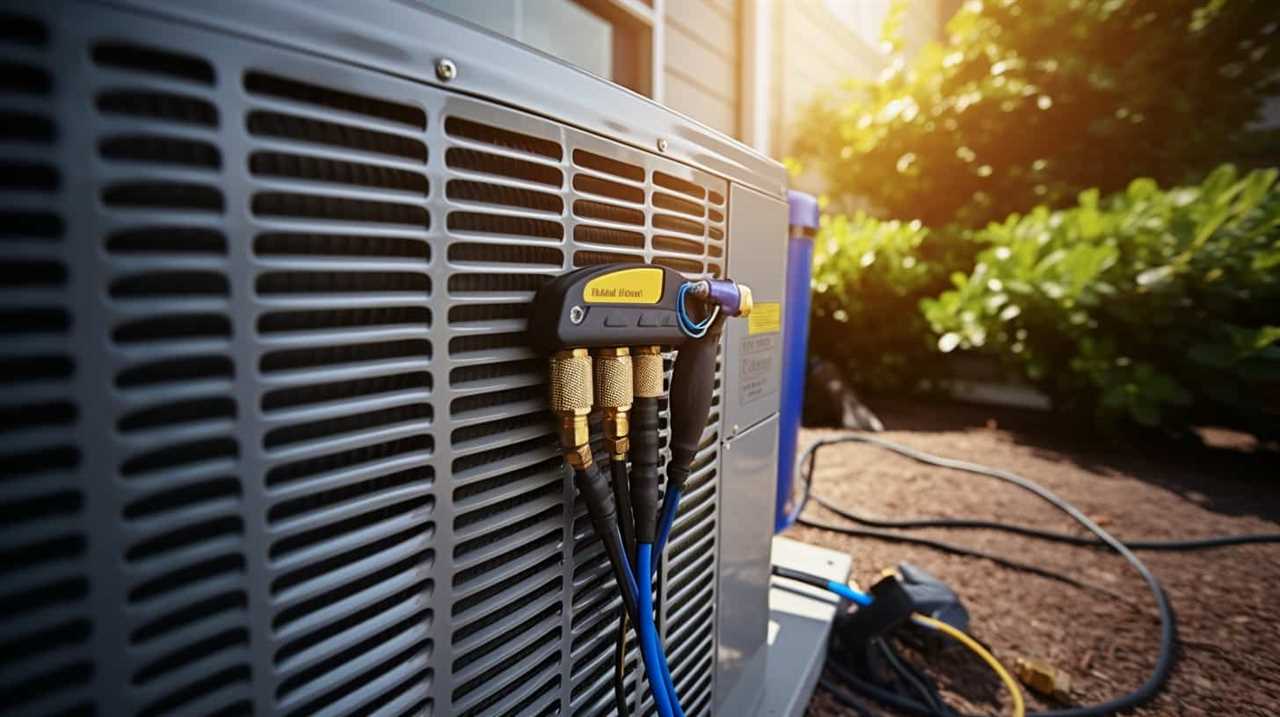
| Factors Affecting Energy Transfer | Impact on Efficiency |
|---|---|
| Proper insulation | High |
| Correct refrigerant charge | High |
| Clean and well-maintained coils | High |
| Optimal airflow | High |
| Proper sizing of equipment | High |
As seen in the table, each factor plays a crucial role in maximizing the efficiency of energy transfer in refrigerant-based heat pumps. By paying attention to these aspects, we can achieve significant energy savings and ensure the best performance from these systems.
Exploring Different Heat Transfer Mechanisms in Heat Pumps
We have identified various heat transfer mechanisms that play a crucial role in the operation of heat pumps. Exploring different heat transfer mechanisms is essential for improving heat transfer performance and optimizing energy efficiency in heat pump designs.
Here are some of the mechanisms we’ve examined:
- Conduction: Heat transfer through direct contact between materials.
- Convection: Heat transfer through the movement of fluids, such as air or water.
- Radiation: Heat transfer through electromagnetic waves.
- Phase change: Heat transfer during the transition between different states of matter, such as liquid to gas or solid to liquid.
- Heat exchangers: Devices that facilitate heat transfer between two fluids without direct contact.
Maximizing Heat Exchange Efficiency in Refrigerant-Based Heat Pumps
To maximize heat exchange efficiency in refrigerant-based heat pumps, we need to focus on three key points.

First, optimal heat transfer techniques should be employed to ensure efficient transfer of thermal energy between the refrigerant and the surrounding environment. This can be achieved through the use of high-performance heat exchangers and advanced heat transfer surfaces.
Second, enhancing refrigerant circulation is crucial to improve heat exchange efficiency. This can be achieved by optimizing the design of the refrigerant circuitry and using efficient pumps or compressors.
Lastly, minimizing energy loss is essential to maximize heat exchange efficiency. This can be achieved by reducing heat leakage through insulation, minimizing pressure drops in the system, and utilizing energy recovery techniques.
Optimal Heat Transfer Techniques
Our focus is on maximizing the heat exchange efficiency in refrigerant-based heat pumps by implementing optimal heat transfer techniques. To achieve this goal, we need to carefully balance temperature gradients and utilize advanced heat transfer techniques.

Here are five key strategies to consider:
-
Enhancing surface area: Increasing the contact area between the refrigerant and the surrounding environment improves heat transfer efficiency.
-
Improving fluid flow: Optimizing the flow rate and direction of the refrigerant enhances convective heat transfer, leading to improved efficiency.
-
Utilizing heat exchangers: Incorporating heat exchangers allows for effective transfer of heat between the refrigerant and the desired heating or cooling medium.

-
Enhancing insulation: Minimizing heat loss through proper insulation helps maintain temperature differentials and improves overall efficiency.
-
Utilizing phase change: Taking advantage of phase change phenomena, such as condensation and evaporation, can significantly enhance heat transfer efficiency.
Enhancing Refrigerant Circulation
Enhancing refrigerant circulation is crucial for maximizing the heat exchange efficiency in refrigerant-based heat pumps. By improving refrigerant flow, we can increase the rate at which heat is transferred and ensure optimal performance of the system.
One way to maximize circulation efficiency is by optimizing the design of the heat exchangers. This involves selecting the right size and type of tubes, fins, and flow channels to promote efficient heat transfer.

Additionally, proper refrigerant charge and pressure levels are essential for maintaining a balanced flow and preventing any restrictions or blockages within the system. Regular maintenance, such as cleaning or replacing filters and checking for leaks, is also necessary to ensure smooth refrigerant flow.
By focusing on enhancing refrigerant circulation, we can significantly improve the heat exchange efficiency of refrigerant-based heat pumps.
To minimize energy loss and further optimize the system, we’ll now discuss the next subtopic: ‘Minimizing Energy Loss’.
Minimizing Energy Loss
By implementing strategies to minimize energy loss, we can effectively maximize the heat exchange efficiency in refrigerant-based heat pumps. To achieve this goal, we should focus on balancing temperature differentials and utilizing advanced heat transfer techniques.
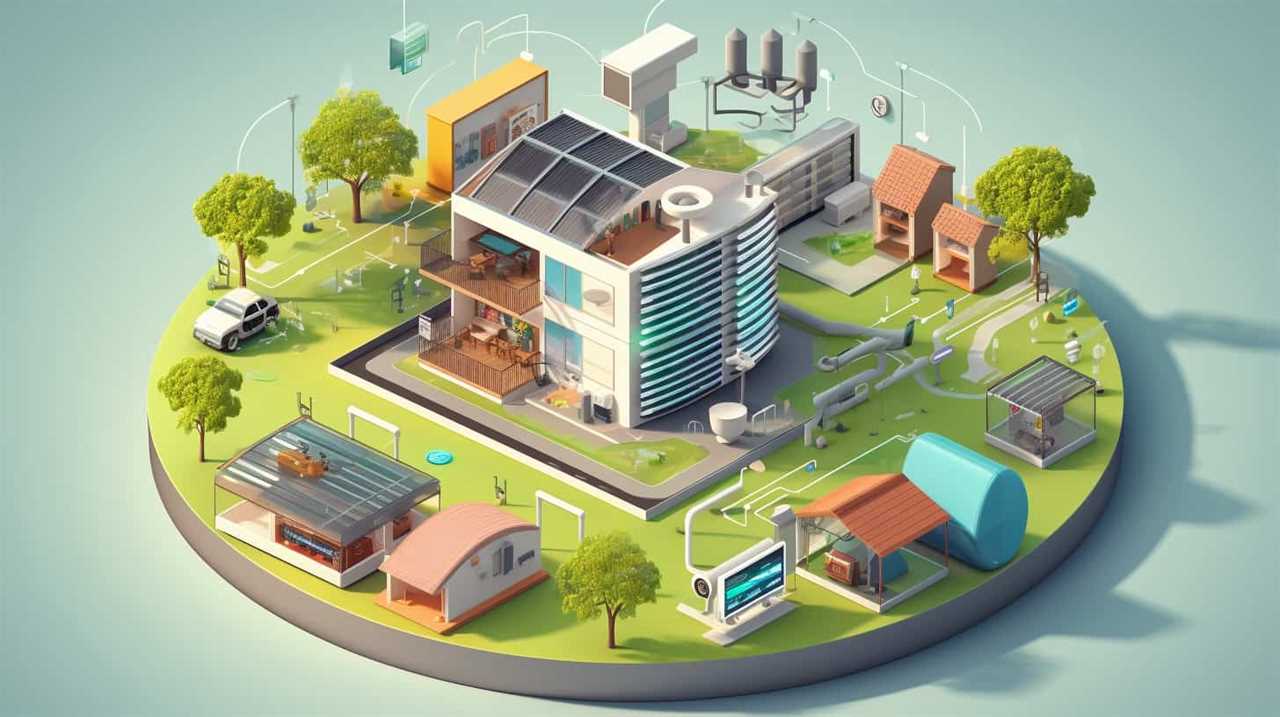
Here are five key strategies to minimize energy loss and improve efficiency:
-
Optimize insulation: Ensuring proper insulation around the system components reduces heat loss and increases overall efficiency.
-
Enhance sealing: By sealing any air leaks in the system, we can prevent energy loss and maintain optimal performance.
-
Improve refrigerant flow control: Implementing efficient flow control mechanisms helps to regulate the refrigerant flow and minimize energy wastage.

-
Enhance heat exchanger design: Utilizing advanced heat exchanger designs improves heat transfer efficiency and reduces energy loss.
-
Regular maintenance: Conducting regular inspections and maintenance activities ensures that the system operates at its peak performance and minimizes energy loss.
Optimizing the Design of Heat Exchangers for Enhanced Energy Transfer
We can optimize the design of heat exchangers to enhance energy transfer in refrigerant-based heat pumps. Maximizing energy efficiency is crucial in these systems, and heat exchanger design improvements play a significant role in achieving this goal.
One way to enhance energy transfer in heat exchangers is by increasing the surface area available for heat exchange. This can be achieved through various means, such as using finned tubes or incorporating extended surfaces. By increasing the surface area, the heat exchanger can extract more heat from the refrigerant, maximizing energy transfer and improving system performance.

Another important aspect of heat exchanger design is optimizing the flow pattern of the refrigerant. By carefully designing the flow path, we can ensure that the refrigerant makes efficient contact with the heat transfer surfaces, facilitating effective heat transfer and minimizing energy loss.
Additionally, selecting the appropriate materials for heat exchanger construction is crucial. Materials with high thermal conductivity and corrosion resistance can enhance energy transfer while ensuring the longevity and reliability of the heat exchanger.
Strategies for Minimizing Heat Loss in Refrigerant-Based Heat Pumps
To minimize heat loss in refrigerant-based heat pumps, we can employ two main strategies: insulation and sealing. These strategies are crucial for improving the overall efficiency and performance of heat pump systems.
Here are five specific ways to minimize heat loss and improve insulation:
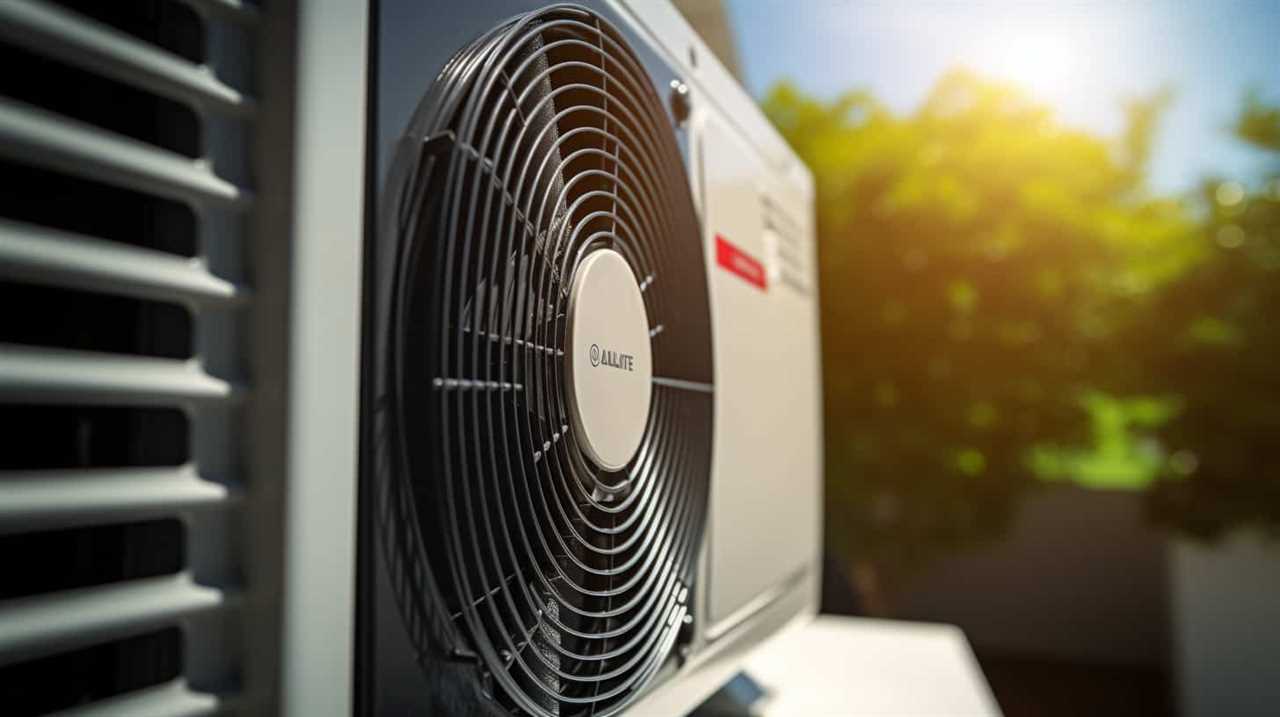
- Properly insulating the refrigerant lines and components to reduce heat transfer between the system and its surroundings.
- Using high-quality insulation materials with low thermal conductivity to prevent heat loss.
- Ensuring a tight seal between different components and connections to prevent air leakage and heat transfer.
- Installing insulation blankets or jackets around heat exchangers and other critical components to minimize heat loss.
- Regularly inspecting and maintaining the insulation system to identify and address any issues that may compromise its effectiveness.
By implementing these strategies, we can significantly reduce heat loss in refrigerant-based heat pumps, leading to improved energy efficiency and cost savings.
Now, let’s delve into the next section, which discusses the importance of balancing heat transfer rates for optimal performance in heat pump systems.
Balancing Heat Transfer Rates for Optimal Performance in Heat Pump Systems
To achieve optimal performance in heat pump systems, it’s crucial to balance heat transfer rates. This involves considering factors such as heat pump efficiency and the balancing of temperature differentials.
Heat Pump Efficiency
Achieving optimal performance in heat pump systems involves balancing the rates of heat transfer to maximize efficiency. To ensure the heat pump operates at its highest efficiency, it’s important to focus on heat pump maintenance and implement energy-saving tips.
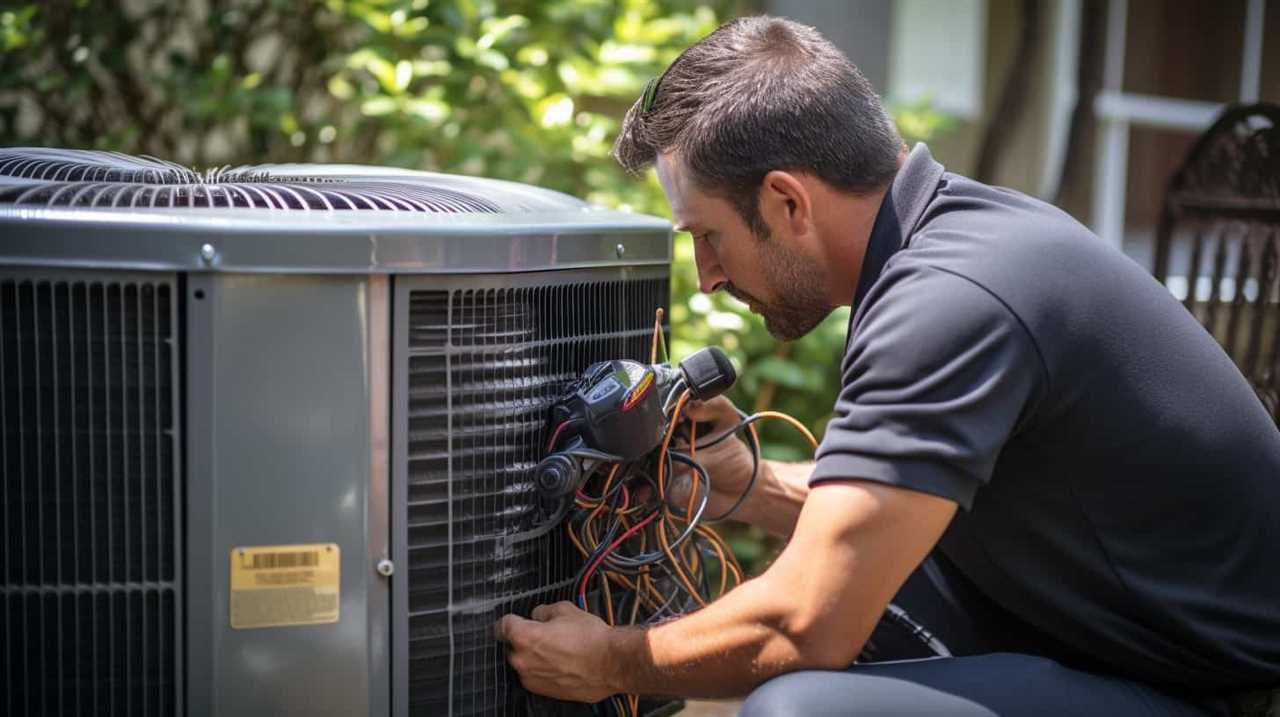
Here are some key strategies to consider:
- Regularly clean and replace air filters to optimize airflow and reduce energy consumption.
- Schedule annual professional maintenance to check for refrigerant leaks, clean coils, and ensure proper system operation.
- Install a programmable thermostat to regulate temperature settings and reduce energy usage when the space is unoccupied.
- Properly insulate the ductwork to minimize heat loss and improve overall system efficiency.
- Consider using a heat pump cover during colder months to protect the outdoor unit and prevent ice buildup.
Optimal Heat Transfer
The key to achieving optimal performance in heat pump systems is balancing the rates of heat transfer for maximum efficiency. Heat transfer optimization plays a crucial role in maximizing efficiency and ensuring the smooth operation of heat pump systems. By carefully managing the flow of thermal energy, we can minimize energy losses and enhance the overall performance of the system. To illustrate the importance of heat transfer optimization, consider the following table:
| Heat Transfer Component | Purpose | Optimization Techniques |
|---|---|---|
| Evaporator | Absorbs heat from the surroundings | Increasing surface area, improving refrigerant flow |
| Condenser | Releases heat to the surroundings | Enhancing airflow, optimizing refrigerant flow rate |
| Compressor | Increases the temperature and pressure of the refrigerant | Minimizing pressure drop, optimizing compressor speed |
Balancing Temperature Differentials?
We can achieve optimal performance in heat pump systems by balancing the temperature differentials and heat transfer rates. Balancing temperature regulation and improving thermal efficiency are essential for maximizing the performance of heat pump systems. Here are five key considerations to achieve this balance:
- Properly sizing the heat pump system to match the heating or cooling load requirements.
- Adjusting the temperature set points to optimize the temperature differentials between the heat source and the heat sink.
- Ensuring proper insulation and sealing to minimize heat loss or gain.
- Regular maintenance and cleaning of the heat pump components to ensure efficient operation.
- Implementing advanced control algorithms and sensors to monitor and adjust the heat transfer rates based on real-time conditions.
Overcoming Challenges in Thermal Energy Transfer for Improved Heat Pump Efficiency
To enhance heat pump efficiency, we must address the challenges associated with thermal energy transfer. Overcoming heat pump limitations is crucial in achieving optimal performance. One way to tackle this is through the use of innovative heat transfer techniques.

These techniques aim to minimize energy losses during the transfer process and maximize the amount of heat that can be extracted or delivered. By employing advanced heat exchangers with enhanced surface areas and optimized flow patterns, we can improve the overall heat transfer efficiency of the system.
Additionally, the implementation of intelligent control systems can help optimize the operation of the heat pump, ensuring that it operates at its highest efficiency levels under varying conditions. These advancements in thermal energy transfer techniques pave the way for improved heat pump efficiency and performance.
Now, let’s delve into the next section to explore advanced techniques for controlling heat transfer in refrigerant-based heat pumps.
Advanced Techniques for Controlling Heat Transfer in Refrigerant-Based Heat Pumps
How can we effectively control heat transfer in refrigerant-based heat pumps using advanced techniques? Optimizing heat transfer efficiency is crucial in improving the overall performance of heat pumps.
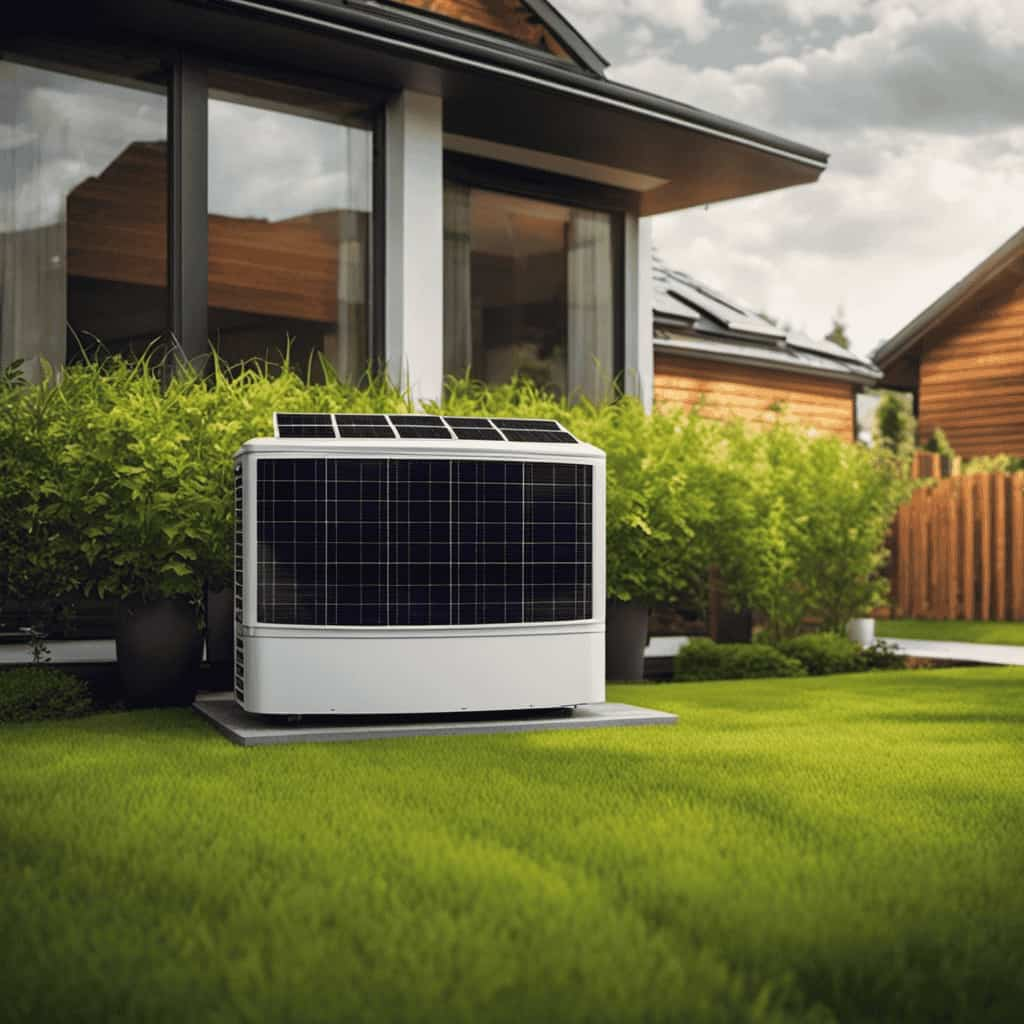
Here are some advanced techniques for heat pump control:
- Variable-speed compressors: These allow for precise control of refrigerant flow, matching the system’s cooling or heating demand.
- Electronic expansion valves: These valves adjust the refrigerant flow rate, ensuring optimal heat transfer and system efficiency.
- Heat exchanger design: Advanced heat exchanger designs, such as microchannel or plate heat exchangers, enhance heat transfer by increasing surface area and reducing refrigerant pressure drop.
- Intelligent control algorithms: Utilizing advanced algorithms, heat pumps can dynamically adjust operating parameters based on environmental conditions, maximizing energy efficiency.
- Integrated sensors and feedback systems: By integrating sensors and feedback systems, heat pumps can continuously monitor and optimize heat transfer performance in real-time.
Implementing these advanced techniques can significantly enhance heat pump performance, leading to improved energy efficiency, reduced operating costs, and increased customer satisfaction.
Mastering the Art of Heat Transfer Management in Heat Pump Applications
Proper management of heat transfer is essential in maximizing the efficiency and performance of heat pump applications. To achieve this, we must focus on innovative heat transfer solutions that can effectively transfer thermal energy between the heat source and the heat sink.
One such solution is the use of advanced heat exchangers that optimize the heat transfer process. These heat exchangers are designed to maximize the surface area available for heat exchange, resulting in improved thermal performance.

Additionally, the use of enhanced heat transfer fluids can further enhance the heat transfer process by increasing the overall heat transfer coefficient.
Frequently Asked Questions
What Are the Different Types of Heat Pumps Available on the Market?
There are several types of heat pumps available on the market. They vary in terms of installation, operating costs, and efficiency. It’s important to consider these factors when choosing the right heat pump for your needs.
How Does the Choice of Refrigerant Impact the Efficiency of a Heat Pump?
Refrigerant selection plays a crucial role in determining the energy efficiency of a heat pump. Different refrigerants have varying thermodynamic properties that affect the heat transfer process, ultimately impacting the overall efficiency of the system.
What Are Some Common Challenges Faced in Maximizing Heat Exchange Efficiency in Refrigerant-Based Heat Pumps?
Challenges in maximizing heat exchange efficiency in refrigerant-based heat pumps are numerous. Strategies include optimizing the design of heat exchangers, reducing thermal losses, and improving refrigerant properties. These efforts are essential for efficient and sustainable energy transfer.

What Are the Key Factors to Consider When Designing Heat Exchangers for Enhanced Energy Transfer in Heat Pumps?
When designing heat exchangers for enhanced energy transfer in heat pumps, key factors to consider include design considerations and performance optimization. These factors are crucial in maximizing heat exchange efficiency and improving overall system performance.
Are There Any Advanced Techniques or Technologies Available for Improving Heat Transfer in Refrigerant-Based Heat Pumps?
Yes, there are advanced techniques and technologies available for improving heat transfer in refrigerant-based heat pumps. These advancements focus on enhancing thermal energy transfer, optimizing heat exchange methods, and improving heat transfer efficiency.
Conclusion
In our quest to master thermal energy transfer in refrigerant-based heat pumps, we’ve delved into the intricacies of heat exchange mechanisms and efficient heat transfer.
By balancing heat transfer rates and overcoming challenges, we can achieve optimal performance and improved efficiency in heat pump systems.

Through advanced techniques and precise heat transfer management, we can unlock the true potential of heat pump applications, paving the way for a future where thermal energy is harnessed with mastery and finesse.


